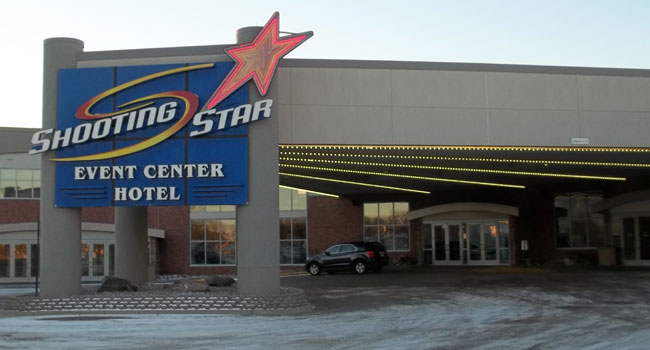
Streamlining Operations
Key management now integral part of casino, hotel and event center
- By Tony V. Capelli
- Jan 01, 2015
For almost 20 years, through multiple facility expansions, umpteen
personnel changes, several system add-ons, integration with the access
control system and three different system managers, Minnesota’s
Shooting Star Casino, Hotel and Event Center has consistently
relied on the performance and scalability of key management technology
from Morse Watchmans.
Located in Mahnomen, Minn. the Shooting Star Casino, Hotel and Event
Center is one of the top entertainment destinations in the region. Owned and operated
by the White Earth Nation, Shooting Star features nearly 30,000 square
feet of event and meeting space, a Las Vegas-style, 72,055-square-foot casino, a
15,000-square-foot concert venue, nearly 30,000 square feet of event space, and a
386-room hotel complete with the full-service Sereniitee Spa, a gift shop, convenient
store, and multiple dining and drinking establishments.
Key Management on the Enterprise Level
Shooting Star’s expansive facility initially started out with one KeyWatcher automated
key management system from Morse Watchmans for the hotel department,
replacing a manual system for storing and tracking keys. Based on the success of
the hotel department implementation, the casino added two more systems—one
for the facilities department and one for use by multiple departments. A fourth
system was later added for use in the slot department.
Along the way, one of the KeyWatcher systems was upgraded and a second
was replaced to enable integration with the casino’s access control system. The advanced
key management systems provide more secure key access as all authorized
staff have to swipe their access control identification cards and enter their PIN in
order to open the cabinet to remove or return a key.
All four of the systems are also on the casino’s network for monitoring access
activity. The integrated key management system is programmed to send various
alerts to Brandon Wirth, access coordinator at Shooting Star, who oversees key
control and badge access for the different departments throughout the facility.
“Along with the transaction reports, I have the system set up for particular
alarms which automatically send the alert to my email account,” Wirth said. “For
example, if a keyset comes up overdue in housekeeping, I follow-up with that person’s
supervisor to determine the reason why the key has not been returned. It
might be that the individual is working overtime or maybe they just forgot to return
the key. In any case, the alert provides instant notification so that we can take
remedial action.”
Gaming Compliance
Wirth goes on to say that transaction reports are downloaded from the system
on a daily basis, including a daily report required by gaming regulations on certain
key sets.
Specifically, these sets are used for table games or slot machines or by the soft
count and hard count teams. Regulations require that activity for any type of key
used for access to gaming funds must be recorded with the date, time, and electronic
signature. An electronic signature includes a unique employee PIN and badge,
or employee biometric identification validated recorded through a computerized
key security system.
“Before we had the key management system, everything was done manually,”
Wirth said. “We had a key control office where all of these keys would come in
and out, and we had a person manually logging activity for each and every key set.
There was a line backed up at every shift change that would go 15 people back. It’s
so much more efficient and easier with the automated system.”
The KeyWatcher system’s KeyPro software not only enables Wirth to generate
scheduled reports, it also allows him to tailor the system’s programming to meet the
facility’s specific needs. For example, to meet the requirements of the National Indian
Gaming Commission, he has set up the system with either a two- or a three-man
rule for accessing and returning sensitive key sets. One person each from the two or
three different departments must log in to access key sets, and the system will only
open the cabinet door and release keys once the required logins are complete and the
credentials verified. As a user convenience, the system will prompt for the additional
logins only once, regardless of how many sets were initially requested.
Wirth can also incorporate time frames into the programming, such as allowing
sensitive keys to be out only within specific time frames. Generally the system
is programmed for non-sensitive keys to be out for the length of a shift—typically
eight hours—plus an additional 10 minutes before a key becomes overdue. He
says that the combination of system software, network access and central control
ensure adherence to security procedures, and compliance with the various gaming
regulations while streamlining operations.
“We’ve never needed to make any alterations to the KeyPro software because it
covers everything,” Wirth said. “I can check alarms in the hotels’ system or make
changes to someone’s access for keys in the casino system, or add new badge information
right from my desk.”
Ready for Another 20 Years
Currently there are approximately 600 keys secured in the four cabinets with the
capability to add more modules to any of the cabinets as needed. A recent inventory
of the stored keys, when compared to usage reports generated by the system,
revealed that many of the keys were not being used or being used infrequently.
Rather than take up valuable space, obsolete keys were removed from the system
creating smaller key sets, and new key sets were created by combining occasional
use keys on a single key ring.
Wirth believes that Shooting Star hasn’t even scratched the surface
in using all of the features available with the key control system.
“I’m quite sure that as new applications arise, we’ll find that the
key management system can support our needs,” Wirth said. “It’s a
very sophisticated system.”
This article originally appeared in the issue of .